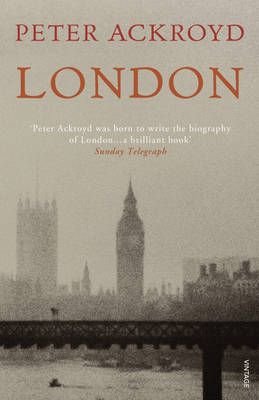

Mighall, Robert (2003) A Geography of Victorian Gothic Fiction: Mapping History’s Nightmares. Hurley, Kelly (2004) The Gothic Body: Sexuality, Materialism, and Degeneration at the Fin de Siècle. Gilbert, Francis (1999) ‘I Will Rise Again’, New Statesman, 20 December. London: Penguin Books (original work published 1919). New York: Routledge.įreud, Sigmund (2003) The Uncanny, 1919, trans.

Harpenden: Pocket Essentials (original work published 2006).ĭe Groot, Jerome (2009) Consuming History: Historians and Heritage in Contemporary Popular Culture. London: Vintage (original work published 2011).Ĭoverley, Merlin (2012) Psychogeography (revised eBook edn). London: Vintage (original work published 2001). The Collection: Journalism, Reviews, Essays, Short Stories, Lectures (pp.

(2002) ‘London Luminaries and Cockney Visionaries’ in Thomas Wright (ed.) Peter Ackroyd. London: Vintage (original work published 2000). This process is experimental and the keywords may be updated as the learning algorithm improves.Īckroyd, Peter (2001) London: The Biography. These keywords were added by machine and not by the authors. I will argue that this spectral consciousness is the key to understanding Ackroyd’s Gothic theory of the history of place, his historiography’s fusion of history and geography into a transhistorical palimpsest that is manifested through hauntings, traces, and uncanny returns. In these volumes, he argues that this abhuman London possesses an uncanny form of agency, a kind of spectral consciousness through which the city is able to influence its inhabitants. By employing the discourses of monstrosity, spectrality, and the uncanny, Ackroyd anthropomorphically transforms the city into something akin to the abhuman monster of the Gothic mode. Within these three companion volumes on London’s history, Ackroyd complicates the relationship between history and geography in the city by engaging with the language and tropes of the Gothic to explore what he believes to be ‘a Gothic genius loci of London fighting against the spirit of the classic’ (Ackroyd 2001, 580). To date, much of the scholarship concerning the Gothic in Ackroyd’s works has tended to focus on analyses of particular novels, while very little has been written with regard to its presence within his historical writing. In this chapter, I will examine the ways in which the Gothic mode functions in Peter Ackroyd’s trilogy of London histories, London: The Biography Thames: Sacred River and London Under. Robert Mighall has argued that the Gothic is a mode fundamentally concerned with history and geography (Mighall 2003, xiv).


 0 kommentar(er)
0 kommentar(er)
